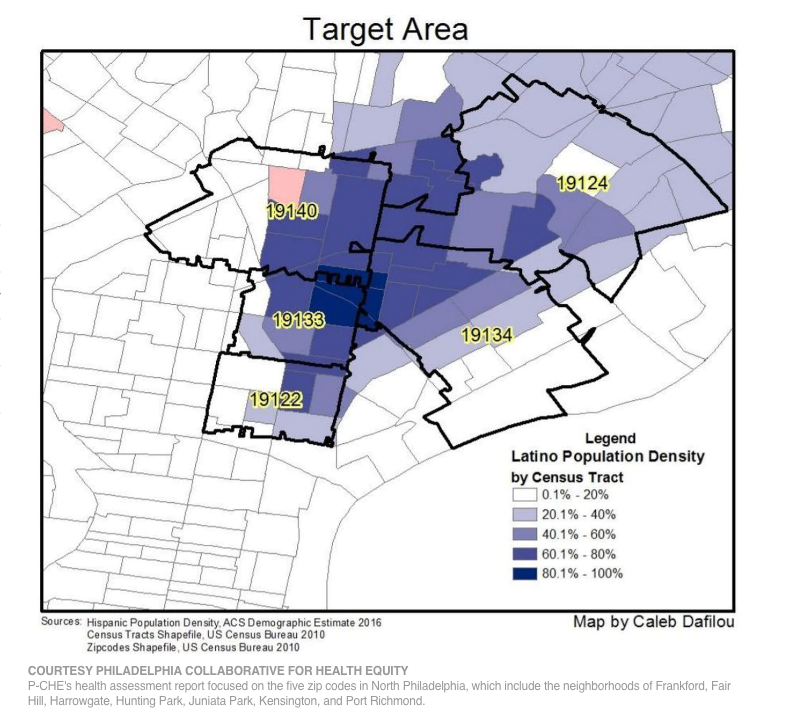
Share On Social!
Latino children are far more likely than their peers to suffer depression and many other psychological issues that will go untreated at higher rates than their peers.
May is Mental Health Awareness Month, and it is crucial to not only address this issue at-large but also to consider the inequities that impact underrepresented communities.
Latino students in Philadelphia (14.1% Latino) are capturing those disparities and trials that can lead to the development of harmful mental conditions, through an initiative by the Philadelphia Collaborative for Health Equity (P-CHE) and Thomas Jefferson University.
This is one of many innovative solutions communities and schools are developing to promote healthy minds. Other programs across the country are also trying to change the status quo, according to a Salud America! research review.
About the Project
The initiative aims to assess various wellness inequalities, including mental health, affecting Latinos living in North Philadelphia — specifically, east of Broad Street, The Philadelphia Inquirer reports. 
As part of their participation, Latino high school students captured photos that illustrated what prevents them from being healthy.
Aspects of city life that affect mental health became clear: many images contained mounds of trash everywhere, needles thrown around in parks, and memorials of children who died due to gun violence.
Furthermore, researchers conducted focus groups with more than 70 residents and community organizations that were used with the photographs. They also collected data from the Public Health Management Corporation’s 2018 Household Health Survey.
The project concentrated on five zip codes which incorporated low-income neighborhoods including:
- Frankford
- Fairhill
- Harrowgate
- Hunting Park
- Juniata Park
- Kensington
- Port Richmond
People living in these neighborhoods face severe health inequalities. Shockingly, a newborn’s life expectancy can be up to 20 years lower than children born in other parts of the city, according to the Inquirer.
“This area represents some of the worst health outcomes in the city,” said Jack Ludmir, executive director of P-CHE. “We’re trying to address that by going in and listening to find what are the true needs.”
North Philadelphia and Mental Health
Researchers found many issues, including poverty, low-quality education, and minimal access to healthy food, are factors affecting the Latino community in North Philadelphia.
Yet, the one issue that rose to the top of the list was mental health.
In that community, roughly two in five Latinos experience a mental health condition — double the national rate.
“Mental health is still fairly stigmatized in Latino communities,” Ludmir said. “It can really carry a significant burden for the rest of your life.”
Nearly 78% of Latino kids suffer from at least one adverse childhood experience (ACEs), according to a Salud America! research review. ACEs include poverty, neglect, abuse, and forms of household dysfunction (divorce, violence, substance use disorder, etc.).
Additionally, research shows that those who suffer from ACEs are more likely to face poor life outcomes.
Sadly, residents in North Philly are more likely to experience four or more ACEs.
Factors Driving Mental Health Issues
Currently, numerous crises and circumstances can impact phycological wellness:
- The opioid crisis – mortality rates have steadily been rising for Latinos
- Neighborhood environment
- Gun violence
- Poverty – 45% of residents in the study area live below the poverty line
75% of Latinos in Philadelphia identify as Puerto Ricans and are citizens of the U.S. However, anti-immigrant rhetoric has also caused residents to be afraid, according to the report.
Additionally, Philadelphia Latinos are less likely to receive mental health care treatment.
Ludmir stated they had quantified the problem, and now they must fix it!
Explore More:
Mental HealthBy The Numbers
142
Percent
Expected rise in Latino cancer cases in coming years




I know this is a two year old article, but Bias is another reason why some Hispanic people think about or attempt suicide. I’m actually part Filipino, German and English and I ended up looking stereotypically Hispanic and my surname is Spanish due to my Filipino side since the Spanish colonized the Philippines. I’m a woman though and I’ve thought about it for a number of reasons involving my health from a rare disorder that caused learning issues and also I have obvious cancer symptoms Ive tried getting help with. I’ve also been treated poorly and sometimes in very scary situations because of obvious Bias and Prejudice due to my appearance. I’m just saying Bias against people who are Hispanic and “look Hispanic” is a real thing. I apologize if it was in this article but I didn’t notice it, But I do apologize if its in there. I just think it needs to be addressed more. Thank You